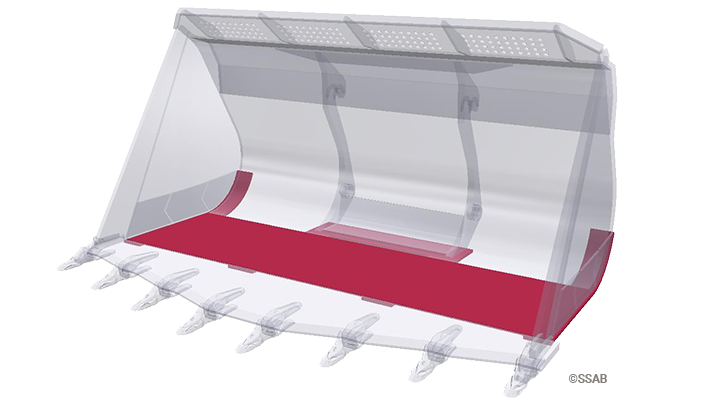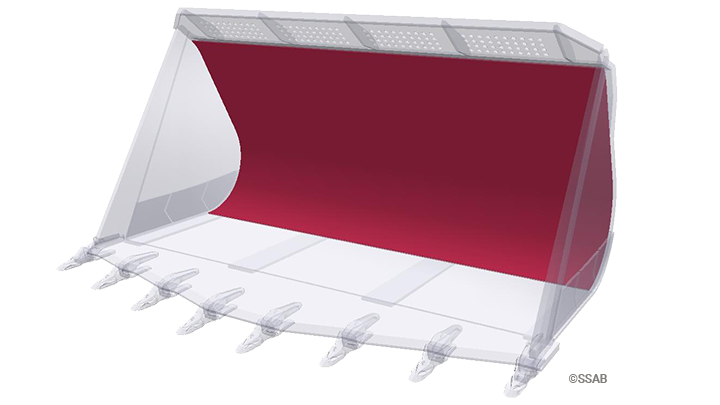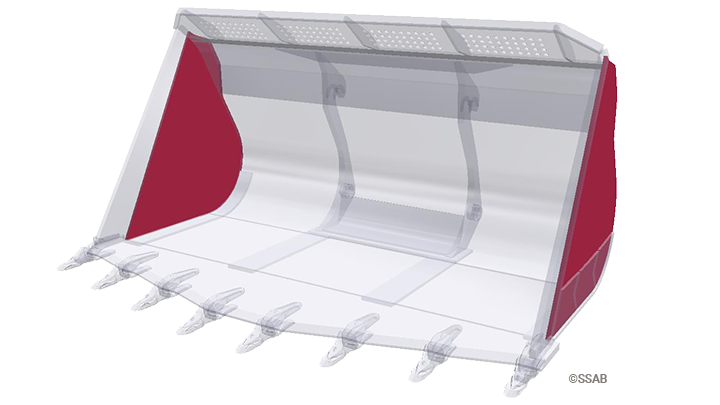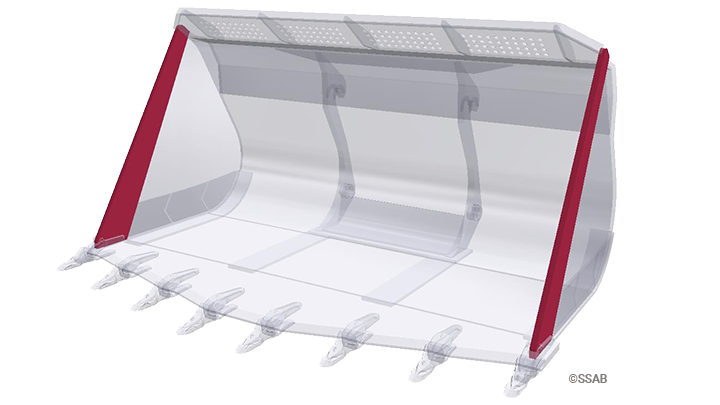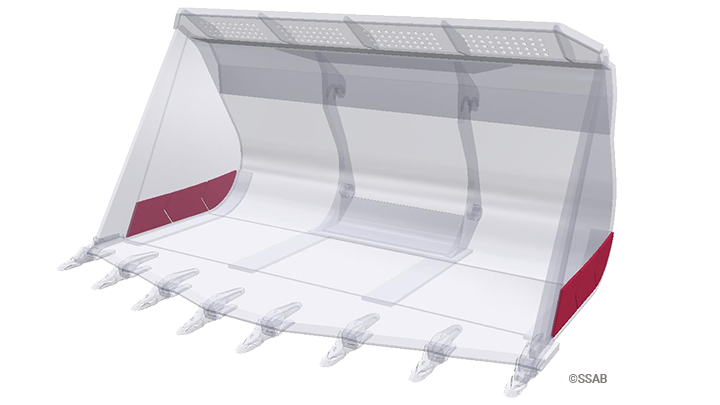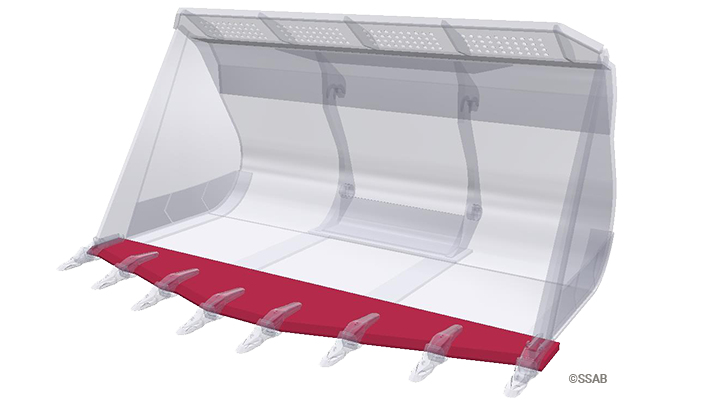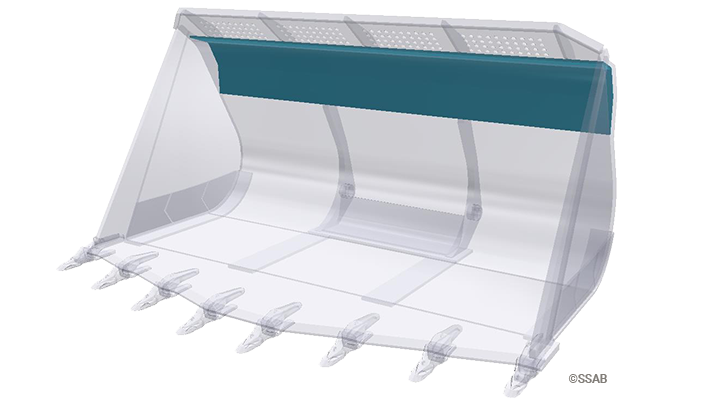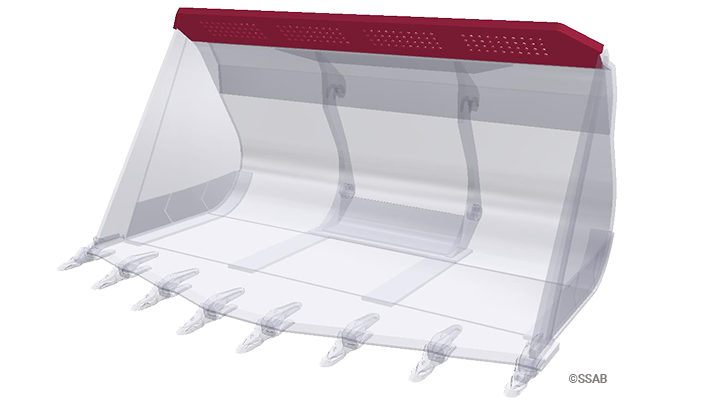


Loader buckets and front loader buckets are traditionally made of 400 or 450 Brinell hardness steel or even softer steel. The development of Hardox® 500 Tuf wear steel enables the use of even harder steel in a large part of a loader bucket. Hardox® 500 Tuf has a hardness of approximately 500 HBW. The higher strength enables thinner steel components and lighter buckets. This means the bucket can be used for heavier scoops and higher productivity, or on smaller machines. Higher hardness results in a longer service life, as shown in the graph.
This guide gives examples and recommendations of how and where to use Hardox® wear plate.
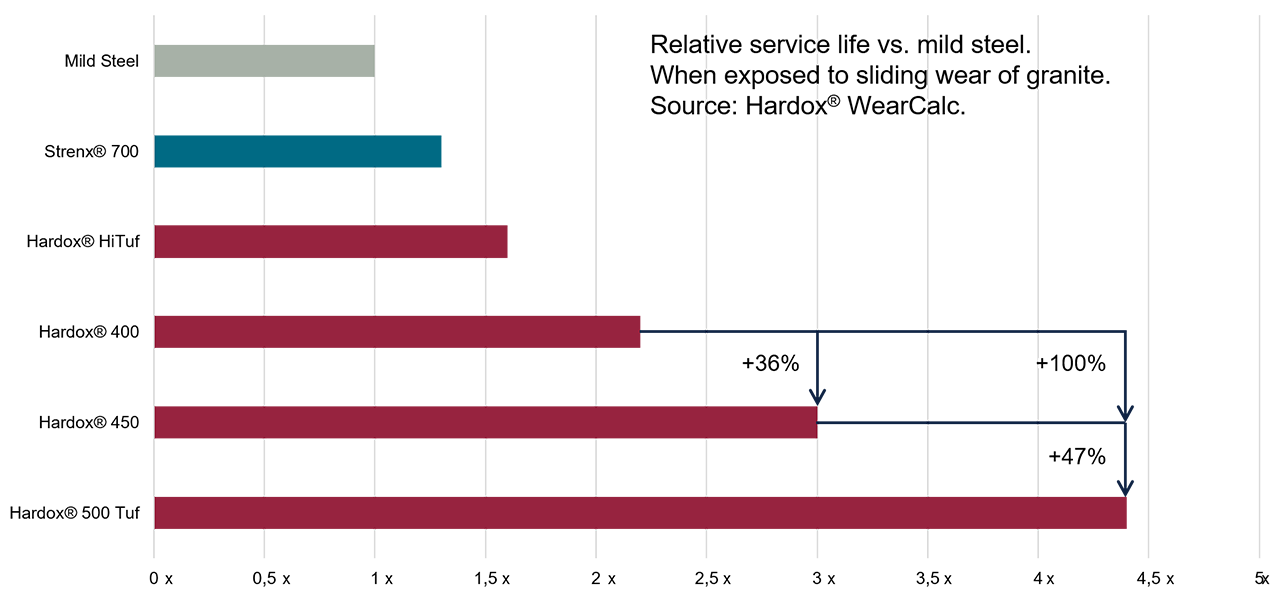
1. Bottom plate
Recommended steel: Hardox® 500 Tuf.
The bottom plate will be affected by sliding wear under high pressure, which will lead to a high wear rate. It is important to choose the hardest plate possible in the structure. This is why we recommend Hardox® 500 Tuf to utilize the full potential of the plate. For additional wear protection underneath the bottom plate, we recommend wear strips of Hardox® 600.
2. Shell plate
Recommended steel: Hardox® 500 Tuf.
The shell plate will have a relatively lower wear rate compared to the bottom plate and will benefit from the high hardness and high yield strength that comes with Hardox® 500 Tuf. As the shell plate is a large component, it is an important candidate for weight saving. In most cases, Hardox® 500 Tuf enables a reduction in both thickness and weight, while prolonging the wear life.
3. Sides plates
Recommended steel: Hardox® 500 Tuf.
Just like the shell plate, the side plates are large components with relatively low wear. With Hardox® 500 Tuf, the thickness can be thinner and the weight lower, yet still offer longer service life. Apart from side cutters and lower side wear plates, there is normally no need for extra protection.
4. Side cutters
Recommended steel: Hardox® 500 or Hardox® 450.
The side cutters are, like the cutting edge, heavily subjected to sliding wear under high pressure. In addition, to cut into the dug material, the side cutters also protect important structural parts. We recommend using Hardox® 500 or Hardox® 450 in these areas. For very tough conditions, the side cutter can be protected with bolt-on ground engaging tools (GET).
5. Lower side wear plates
Recommended steel: Hardox® 500 or Hardox® 500 Tuf.
The lower side wear plates are exposed to very high wear. To protect the side plates and lower side edge area, we recommend Hardox® 500 or Hardox® 500 Tuf. We recommend the same thickness and steel grade as in the side plate, to optimize the material usage. The lower side wear plates will wear down and should be replaced together with the bucket’s ground engaging tools (GET).
6. Cutting edge
Recommended steel: Hardox® 450.
The cutting edge is made to withstand high wear combined with high structural forces. To master both, we recommend using Hardox® 450. The cutting edge should be protected with ground engaging tools (GET) like teeth, tooth adapters and lip shrouds. Hardox® HiTuf can be an option for very wide loader buckets for high loads and the risk of high mid-deflection.
7. Top beam
The information in this report is only applicable to SSAB’s products and should not be applied to any other products than original SSAB products.
This report provides general results and recommendations for SSAB steel products. This report is subject to SSAB’s Terms of Use. It shall be the user's responsibility to verify that the information contained herein is correct and is suitable to be used for the particular purpose and application of the user. The report is intended to be used by professional users only who possess adequate expertise, qualification and knowledge for the safe and correct use of the results and recommendations in this report. This report is provided “as is”. The use of the report is at user’s own discretion and risk and that users will be solely responsible for any use of this report. SSAB disclaims any liability for the content or potential errors of this report, including but not limited to warranties and condition of merchantability or fitness for a particular purpose or suitability for individual applications. SSAB shall not be liable for any kind of direct or indirect damages and/or costs related to or arising therefrom, whether special, incidental, consequential or directly or indirectly related to the use of, or the inability to use, the report or the content, information or results included therein.
